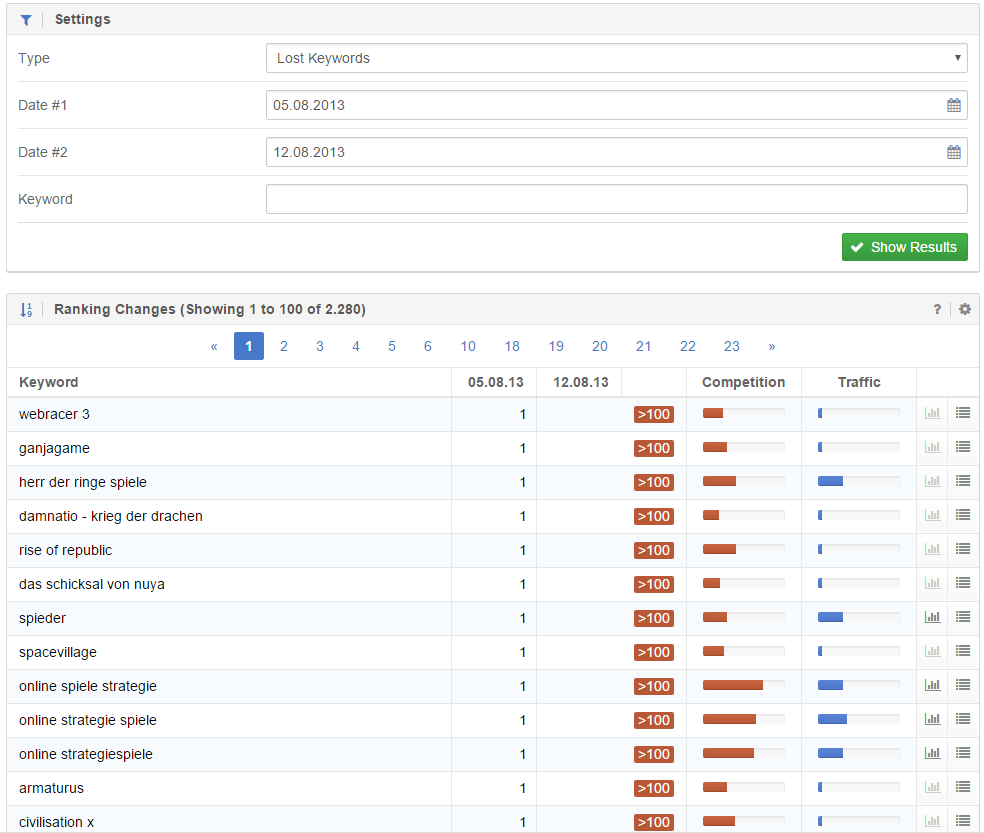A Penalty is a measure by Google to punish websites that are in violation of their Webmaster Guidelines. A penalty can have different levels of severity in which it affects a website.
Discover how SISTRIX can be used to improve your search marketing. 14 day free, no-commitment trial with all data and tools: Test SISTRIX for free
You can differentiate between punishments on a keyword-, URL- or directory level as well as a sitewide (affecting the entire domain) penalty. Another kind of penalty is the exclusion of the entire website from the Google-Index, which is known as Delisting.
There is also a difference between manual- and algorithmic-penalties.
Types of Google Penalty
Google penalties can range from a single URL to complete de-listing of a domain.
- Keyword-level
- URL- or directory-level
- Hostname-level (Subdomain)
- Domain-wide (sidewide); entire domain-name
- Delisting (De-Indexing)
Penalties are implemented through one of two methods.
- Algorithmic penalty
- Manual penalty by a Google employee
The different effects of Google punishments (Penalty-Level)
A penalty on a keyword-level means that one specific or (few) more keywords of a punished domain lose their ranking positions. All other keywords are unaffected by this penalty.
What follows is an example of a keyword penalty. For the punished domain, the ranking of the keyword “prepaid vergleich” (prepaid comparison) took a massive hit. Other keyword rankings, however, were not affected.
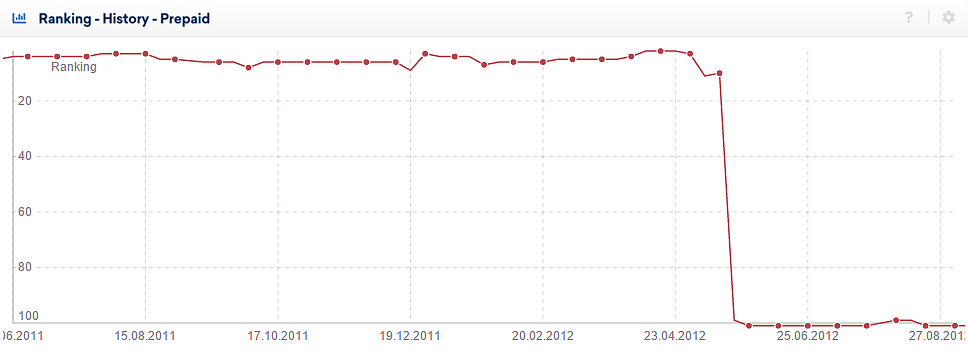
A penalty on a URL- or directory-level will see almost all ranking position for the affected URL or directory take a nosedive.
A sidewide penalty means that many keywords on the entire domain lose a massive amount of ranking positions.
Here we have an example of a massive ranking loss across many keywords for a penalised domain:
If Google decides to punish a website with a so called Delisting, they will remove the entire domain from the Google Index. This results in no content of the punished website showing up in Google’s search results. If you run a search with the site:-operator for the domain you will also not get any results.
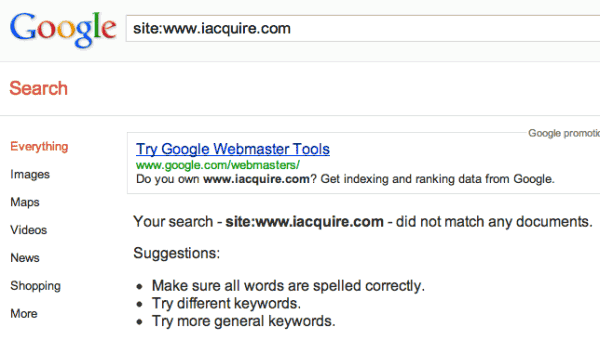
Picture source: http://searchengineland.com/iacquire-banned-from-google-after-link-buying-allegations-122414
What is an algorithmic penalty?
An algorithmic penalty is an automatically applied punishment by one of Google’s algorithms. Algorithms like the Google Panda Update or the Google Penguin Update were filters that use their core metrics to check websites for specific properties and punish them if they do not adhere to or even violate them.
Since 2018, Google has rolled updates under a term called Core Updates, for which there is often no specific information as to what was targeted in the update, making it more difficult to recover. You can view and check all the SISTRIX data analysis on major Google updates.
If a website is hit by an algorithmic penalty, both the Visibility and findability in the SERPs (Search Engine Results Pages) of the filtered domain takes a dramatic and sudden turn for the worse.
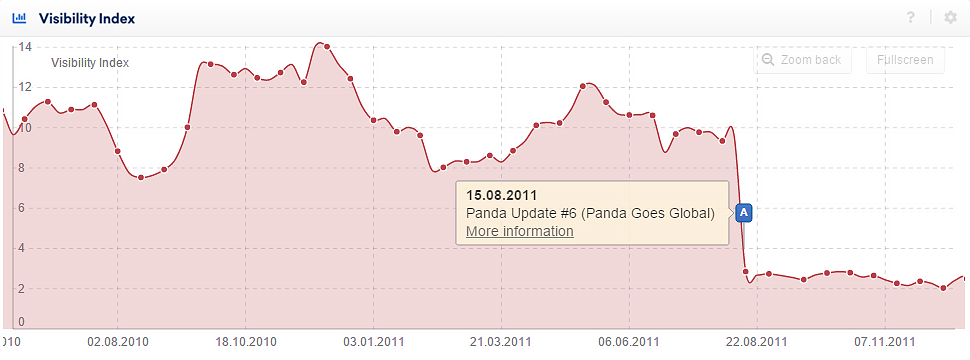
You can use the Visibility Index chart of the SISTRIX Toolbox with activated event pins to find out if a domain might have been affected by a filter and thereby inflicted with an algorithmic penalty.
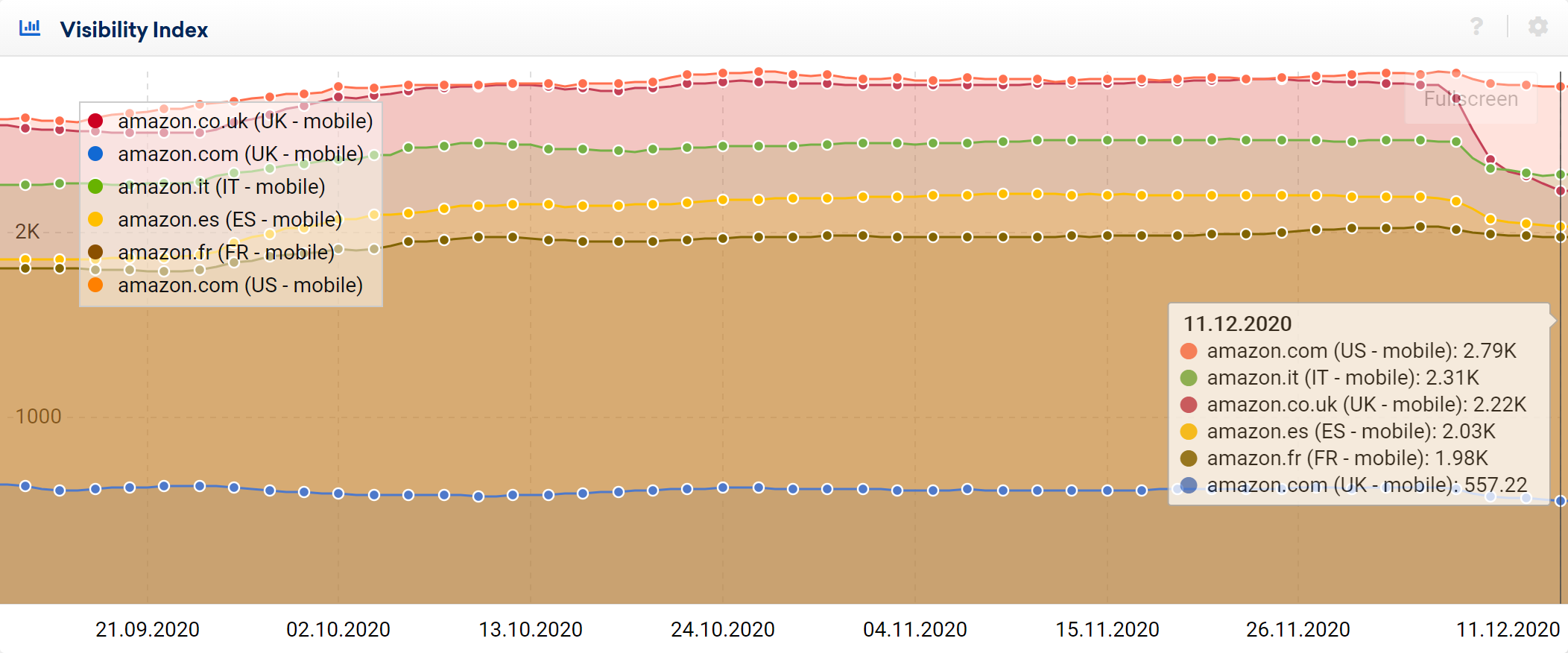
What is a manual penalty?
For a manual penalty a Google employee, for example from the Search Quality- or Webspam Team, has to actively take action against a domain. A domain will be manually reviewed by a Google employee if the domain is suspected to be in violation of the Google Webmaster Guidelines.
The following seven cases could be the reason for why a Google employee inflicts a manual penalty on a website:
- User-generated spam
- Hidden text and/or keyword stuffing
- Pure spam
- Thin content with little or no added value [for the user]
- Unnatural Links to your site
- Unnatural links from your site
- Unnatural Links to your site, with site-overarching impacts from those links
To figure out which websites to check manually, Google also uses spam reports created by users, among other things. (https://developers.google.com/search/docs/advanced/guidelines/report-spam)
If a website received a manually penalty by Google, there will be a report within the Google Search Console under the “Manual Actions”-menu:
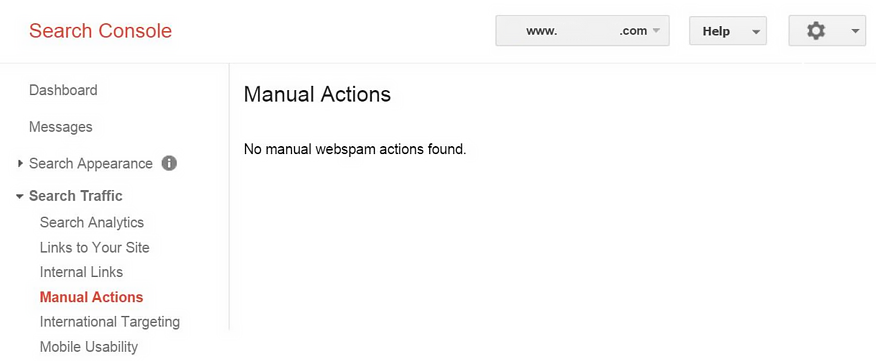
Depending on the severity and scope of the violation, the punishment and restrictions on the website will be in place for a specific time, until they run out.
Video explanation by Google on the topic of manual actions
Additional information on Google penalties
SISTRIX
- Google Update Checker
- Tutorial: Tips for detecting a natural link profile
- Tutorial: Finding Poor Links Through Filters
- Can my website be punished by the Google Penguin Update? Do I have an unnatural link profile?
Test SISTRIX for Free
- Free 14-day test account
- Non-binding. No termination necessary
- Personalised on-boarding with experts
